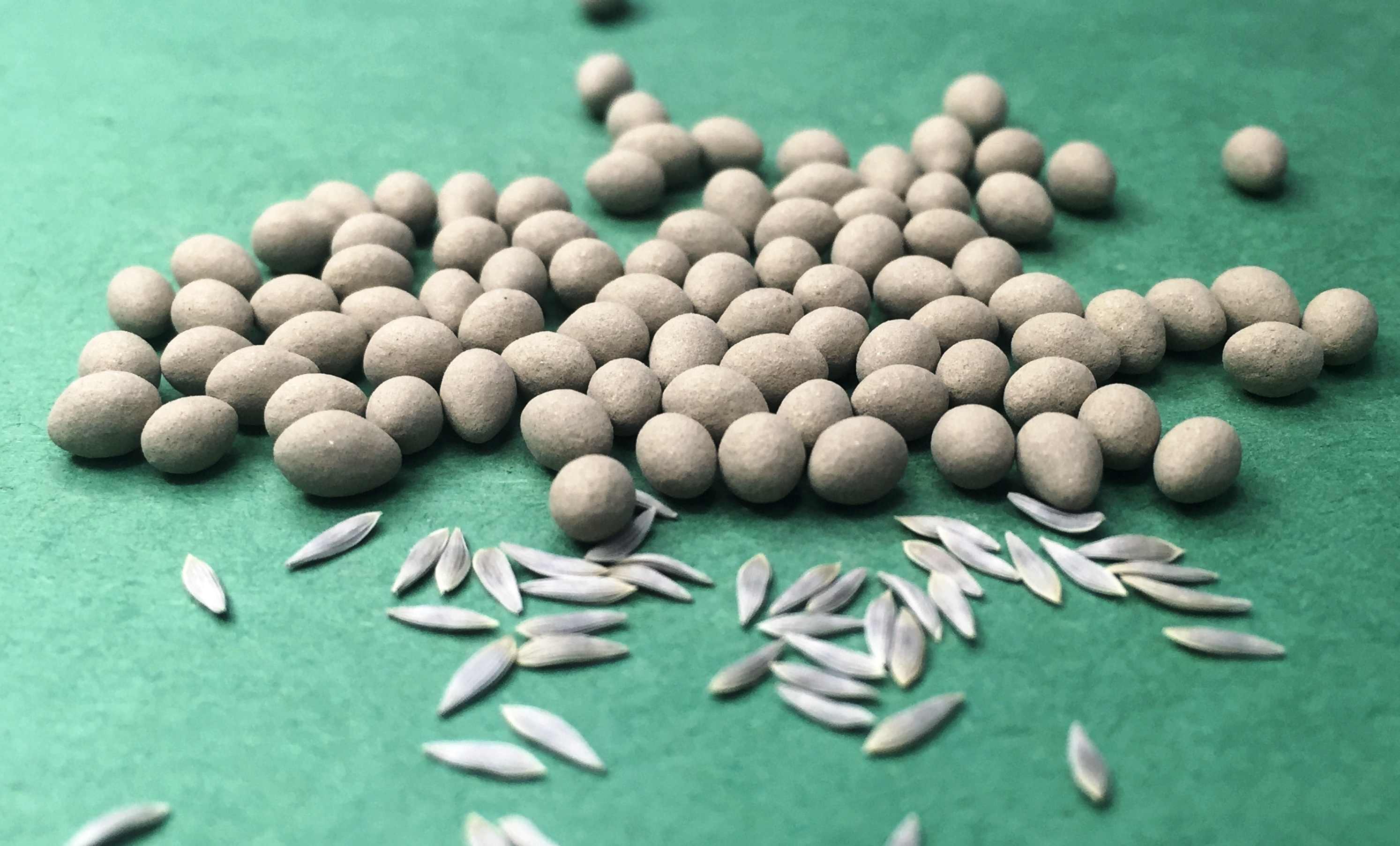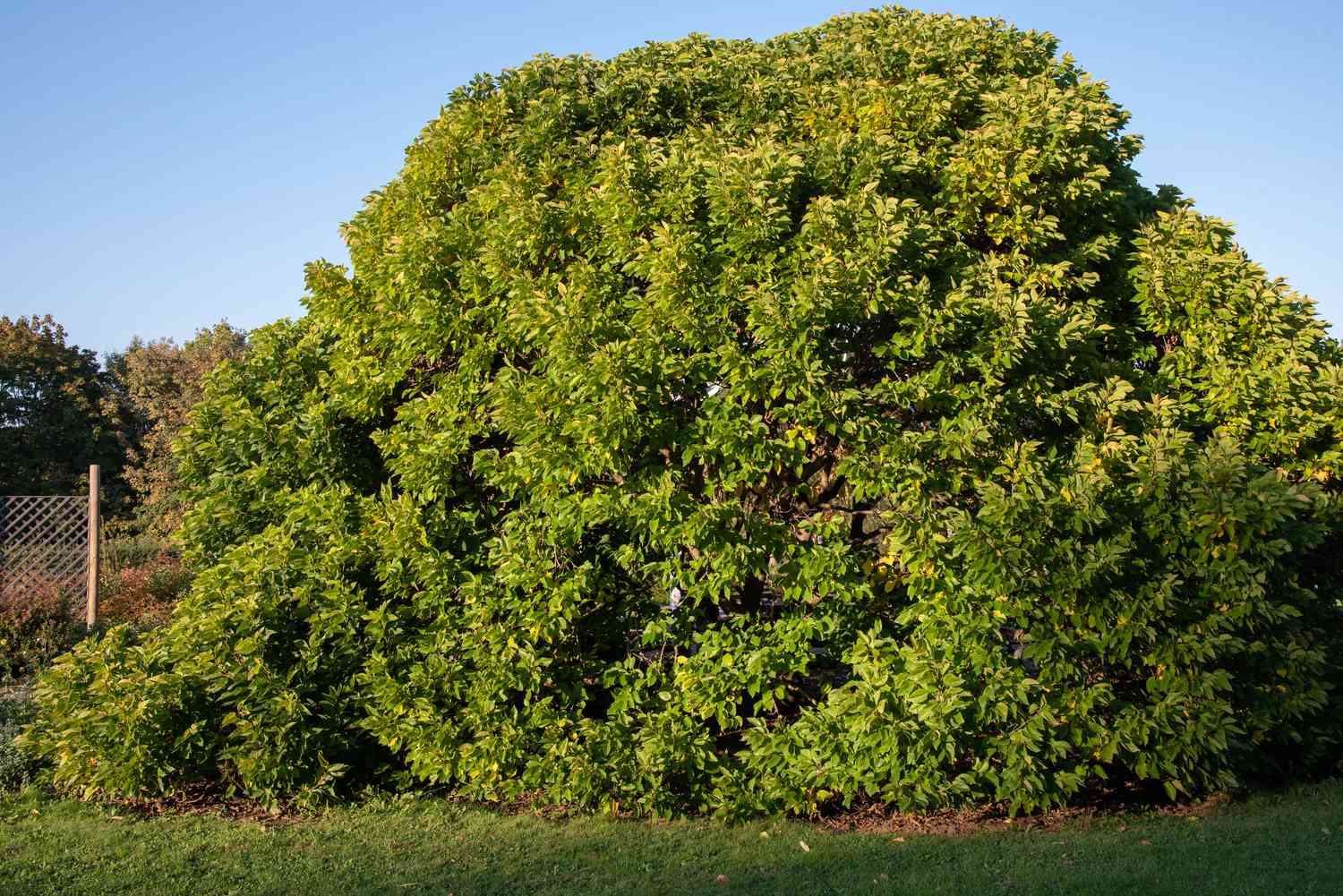Home>Gardening Tips and Tricks>Problem Solving>How Do Scale Insects Get On Plants


Problem Solving
How Do Scale Insects Get On Plants
Modified: January 22, 2024
Discover effective problem-solving techniques to prevent and eliminate scale insects on plants. Expert tips and advice to keep your plants healthy and thriving.
(Many of the links in this article redirect to a specific reviewed product. Your purchase of these products through affiliate links helps to generate commission for Chicagolandgardening.com, at no extra cost. Learn more)
Table of Contents
Introduction
Welcome to our in-depth guide on scale insects and how they can affect plants. If you are an avid gardener or have plants in your home, you may have encountered these small, sap-sucking pests at some point. Scale insects are a common problem that can have a significant impact on the health and vitality of plants if left untreated. In this article, we will explore the world of scale insects, including their life cycle, methods of infestation, natural and human-assisted spread, as well as prevention and control measures.
Scale insects, scientifically known as Coccoidea, are small pests that belong to the order Hemiptera. They can be found in various shapes, sizes, and colors, ranging from elongated to round and from brown to yellow or green. These tiny pests attach themselves to the stems, leaves, and sometimes even the fruits of plants, where they feed on the plant’s sap. As they feed, scale insects secrete a waxy substance, which forms a protective covering or shell over their bodies, hence the name “scale.”
The life cycle of scale insects consists of various stages, including eggs, nymphs, and adults. Female scale insects lay eggs under their protective covering, and these eggs hatch into nymphs, which resemble miniature versions of the adults. The nymphs then go through a series of growth stages before they reach maturity.
Scale insects can spread through natural means, such as wind dispersal or crawling from plant to plant. However, they can also be introduced to new areas through human activities. This can occur through the transportation of infested plants or the movement of gardening tools or equipment. Human-assisted spread is a significant factor in the global distribution of scale insects.
Preventing and controlling scale insect infestations is crucial to maintain the health and vitality of your plants. There are various methods you can employ, including cultural, biological, and chemical control measures. Implementing the right combination of these methods can help in effectively managing scale insect populations and minimizing their impact on plants.
In the upcoming sections, we will delve deeper into each aspect of scale insects, providing you with a comprehensive understanding of their lifecycle, methods of infestation, natural and human-assisted spread, as well as prevention and control measures. By the end of this guide, you will be equipped with the knowledge and tools necessary to tackle scale insect infestations and safeguard your plants.
Overview of Scale Insects
Scale insects are a group of plant pests that can cause significant damage to a wide range of plants, including ornamental plants, fruit trees, and vegetables. They belong to the order Hemiptera and have a unique appearance. The bodies of scale insects are usually covered with a protective waxy coating, which gives them a characteristic scale-like or armored appearance.
There are over 8,000 species of scale insects worldwide, with a wide variation in size, shape, and color. They can range from just a few millimeters to over one centimeter in length. Scale insects can be categorized into two main types: soft scales and armored scales.
Soft scales, as the name suggests, have a soft body covered by a waxy coating. They tend to be larger than armored scales and secrete large amounts of sticky honeydew. Examples of soft scale insects include the cottony cushion scale and the citrus mealybug. Armored scales, on the other hand, have a hard, protective covering made of waxy material. This shell-like armor protects them from predators and environmental factors. Some common examples of armored scale insects are the San Jose scale and the euonymus scale.
Scale insects primarily feed on the sap of plants. They use their specialized mouthparts, known as stylets, to pierce the plant tissue and extract the sap. This sap-sucking behavior weakens the plants and reduces their ability to grow and produce. As a result, infested plants may exhibit symptoms such as stunted growth, yellowing leaves, leaf drop, and general decline in health.
In addition to the direct damage caused by feeding, scale insects can also indirectly harm plants by excreting honeydew. Honeydew is a sticky, sugary substance that attracts ants and promotes the growth of sooty mold, a black fungus that can cover leaves and stems, hindering photosynthesis.
One of the challenges of dealing with scale insects is their ability to reproduce rapidly. Female scale insects can lay hundreds of eggs during their lifetime, and their populations can quickly multiply if left unchecked. This makes early detection and intervention essential in managing scale insect infestations.
Now that we have a general overview of scale insects, let’s dive deeper into their life cycle and understand the various stages they go through. By understanding their lifecycle, we can develop effective strategies to control and eliminate these pests from our plants.
Life Cycle of Scale Insects
Understanding the life cycle of scale insects is crucial in effectively managing and controlling their populations. Scale insects have a complex life cycle that consists of several distinct stages: egg, nymph, and adult.
The life cycle begins with female scale insects laying eggs. These eggs are often laid under the protective covering or scale of the adult female. Depending on the species, the number of eggs laid can vary from a few to hundreds. Once the eggs are laid, they remain protected until they hatch.
After a period of incubation, the eggs hatch into nymphs. The nymphs are small and mobile, and they begin to search for a suitable location to settle and feed. During this stage, the nymphs undergo several molts, shedding their exoskeleton as they grow. The number of molts can vary depending on the species and environmental conditions.
As the nymphs continue to feed and grow, they develop a waxy covering that serves as their protective scale. This scale can be soft or armored, depending on the type of scale insect. The scale provides protection from predators, environmental factors, and pesticide applications.
Once the nymphs reach maturity, they become adult scale insects. The adults are generally immobile and spend their life attached to the plant, feeding on the sap. Male adult scale insects are typically smaller and have wings, but they are weak flyers. The females, on the other hand, are larger and lack wings. They reproduce by laying eggs under their protective scale.
The life cycle of scale insects can vary in duration depending on environmental conditions such as temperature and humidity. In optimal conditions, some species can complete a life cycle in a few months, while others may take up to a year or longer.
It is important to note that scale insects can reproduce asexually, meaning that females can produce offspring without mating. This ability, known as parthenogenesis, allows scale populations to grow rapidly. However, in some species, males are necessary for sexual reproduction and the production of eggs that can withstand harsh conditions.
By understanding the life cycle of scale insects, gardeners and homeowners can implement effective control strategies that target specific stages of the life cycle. Early detection and intervention are key to preventing infestations from spreading and causing significant damage to plants.
In the next section, we will explore the different methods by which scale insects can infest plants and the factors that contribute to their spread in nature.
Methods of Scale Insect Infestation
Scale insects can infest plants through various methods. Understanding how these pests spread is essential in preventing and controlling their infestations. Let’s explore some of the primary methods of scale insect infestation:
- Natural Spread: Scale insects can naturally spread from plant to plant through crawlers, which are the mobile nymphs. These crawlers can move short distances on their own or be carried by wind, rain, or other external factors. When the crawlers find a suitable feeding site, they settle and establish themselves, eventually forming their protective scales.
- Wind Dispersal: Some species of scale insects have adaptations that enable them to disperse over longer distances with the assistance of wind currents. The wind can carry crawler nymphs or even adult scale insects and disperse them to new plants or locations.
- Ants: Scale insects have a unique relationship with ants. Certain species of ants are attracted to the sweet honeydew excreted by scale insects as they feed on plant sap. These ants protect the scale insects from natural predators, such as ladybugs or parasitic wasps. In return, the ants “farm” the scale insects for their honeydew. Ants can inadvertently transport scale insects to new plants as they move between colonies.
- Plants in Close Proximity: Scale insects can easily crawl from one plant to another when plants are placed in close proximity. This is especially common in gardens or greenhouses where plants are densely arranged. Scale insects can crawl or fall from an infested plant onto neighboring plants, leading to the rapid spread of infestations.
- Transportation of Infested Plants: Scale insects can be inadvertently introduced to new areas through the transportation of infested plants. When people purchase or receive plants, there is a risk of bringing along scale insects or their eggs. It is essential to inspect new plants for any signs of infestation before introducing them to your garden or indoor space.
By understanding the various methods of scale insect infestation, you can take proactive measures to prevent their spread. Regular inspections of plants, maintaining good plant spacing, and quarantine protocols for new plants can all help in reducing the risk of scale insect infestations.
In the next section, we will explore how both natural and human-assisted factors contribute to the spread of scale insects in nature.
Natural Spread of Scale Insects
Natural spread plays a significant role in the distribution and expansion of scale insects in nature. These pests have evolved various mechanisms to disperse and colonize new plants. Let’s explore some of the key factors contributing to the natural spread of scale insects:
- Crawler Dispersal: Scale insects have a mobile stage in their life cycle known as crawlers. These crawlers are the nymphs that have hatched from eggs and are capable of moving short distances. Crawlers can crawl along stems, leaves, or even delicate plant parts, searching for suitable feeding sites. They can also be easily carried by wind or other external factors to neighboring plants.
- Wind Dispersal: Wind can play a crucial role in the dispersal of scale insects. Some species have adapted to produce light and fluffy crawlers, which are easily carried by wind currents. As these crawlers are transported by the wind, they can land on nearby plants and initiate new infestations.
- Animal Dispersal: Scale insects can also utilize animals as unintentional carriers. Birds, insects, and mammals can unknowingly transport crawlers on their bodies or through their fur or feathers. When these animals come into contact with plants, the crawlers can detach and establish themselves, spreading the infestation further.
- Migratory Host Plants: Scale insects can spread through migratory host plants. Some species of plants act as hosts to scale insects during specific seasons or migration patterns. As these host plants move or migrate, they carry the scale insects to new areas, establishing infestations in previously unaffected regions.
- Biotic Interactions: Scale insects can also spread through interactions with other organisms. Ants, for example, cultivate scale insects and protect them from natural predators. As ants move from plant to plant, they can inadvertently transport scale insects or their crawlers, aiding in their dispersal.
The natural spread of scale insects is a dynamic process influenced by environmental factors and the presence of suitable host plants. Factors such as temperature, humidity, wind patterns, and the availability of food sources can all impact the dispersal and establishment of scale insect populations.
Understanding the natural spread of scale insects can help guide prevention and control strategies. By identifying potential sources of infestation and monitoring the movement of crawlers, gardeners and plant enthusiasts can take proactive measures to mitigate the spread of scale insects and protect their plants.
In the next section, we will explore how human activities contribute to the spread of scale insects, resulting in their wider distribution.
Human-Assisted Spread of Scale Insects
While natural spread plays a significant role in the distribution of scale insects, human activities also contribute to their wider spread, leading to infestations in new areas. Let’s explore some of the ways in which humans unintentionally assist in the spread of scale insects:
- Plant Trade and Transportation: The global plant trade is a major factor in the spread of scale insects. Infested plants, whether for landscaping or agricultural purposes, can carry scale insects or their eggs. When these plants are transported across regions or countries, the scale insects can establish new infestations in previously unaffected areas.
- Infested Plant Materials: Scale insects can also be unintentionally spread through the transportation of infested plant materials. This includes cuttings, branches, and even soil. When infested materials are moved to new locations, the scale insects can disperse and infest nearby plants.
- Movement of Gardening Tools and Equipment: Scale insects can hitch a ride on gardening tools, equipment, or containers. Infested tools or equipment used in one area can introduce scale insects to a new location when transported elsewhere. This emphasizes the importance of cleaning and disinfecting gardening tools and equipment to minimize the risk of accidental spread.
- Infested Nursery Stock: Nurseries can inadvertently sell plants that are infested with scale insects. These infested plants can then be introduced into gardens or other landscapes, spreading the scale insects to nearby plants. It is crucial for nursery operators and buyers to implement proper pest management practices to prevent the sale and purchase of infested plants.
- Lack of Awareness and Education: Lack of knowledge and awareness about scale insects can contribute to their unintentional spread. When people are unaware of the signs of infestation or the proper methods of control, they may unknowingly transport or propagate infested plants, aiding in the spread of scale insects.
Human-assisted spread of scale insects is a significant factor in their global distribution. Awareness, education, and adherence to proper quarantine and pest management measures are essential in minimizing their spread. Regular inspection of plants, sourcing from reputable suppliers, and implementing strict sanitation practices can help prevent the unintentional movement of scale insects.
In the next section, we will discuss preventive measures and control methods that can be employed to manage and control scale insect infestations.
Prevention and Control Measures
Preventing and controlling scale insect infestations is crucial to maintain the health and vitality of plants. By implementing the following preventive measures and control methods, you can effectively manage scale insect populations:
- Regular Inspection: Conduct regular inspections of your plants, paying close attention to the undersides of leaves, stems, and branches. Look for signs of scale insects, such as the presence of scales, sticky honeydew, or black sooty mold.
- Quarantine New Plants: When introducing new plants to your garden or indoor space, isolate them for a period of time to monitor for any signs of infestation. This will prevent the accidental spreading of scale insects to existing plants.
- Promote Plant Health: Healthy plants are more resistant to scale insect infestations. Provide proper soil fertility, adequate sunlight, and appropriate watering to promote plant health and maximize their natural defenses against pests.
- Physical Control: For small-scale infestations, physically removing and disposing of heavily infested plant parts can help reduce the population. Use a soft brush or cloth soaked in alcohol or soapy water to gently wipe off the scales from the affected areas.
- Biological Control: Encourage natural enemies of scale insects, such as ladybugs, lacewings, and parasitic wasps, to help control their population. These beneficial insects can feed on scale insects and help keep their populations in check.
- Cultural Control: Adopt cultural practices that discourage scale insect infestations. This includes regularly pruning and thinning plants to improve air circulation, as scale insects prefer crowded and poorly ventilated areas. Additionally, remove and destroy any infested plant debris to prevent the scale insects from overwintering.
- Chemical Control: In severe infestations, chemical control may be necessary. Use insecticides specifically labeled for scale insects and follow the instructions carefully. Be mindful of the potential impact on beneficial insects and the environment, and consider using insecticidal soaps or oils as a less harmful alternative.
- Integrated Pest Management (IPM): Implement an integrated pest management approach that combines multiple control methods. This involves monitoring, using biological control agents, employing cultural practices, and selectively using chemical control methods when necessary. IPM maximizes control effectiveness while minimizing environmental impact.
Remember that prevention is key when it comes to scale insect management. By practicing good horticultural practices, regularly inspecting your plants, and being proactive in control measures, you can prevent significant infestations and minimize the damage caused by scale insects.
By following these preventive measures and adopting a comprehensive control approach, you can effectively manage scale insect infestations and ensure the health and well-being of your plants.
Conclusion
Scale insects can pose a significant threat to the health and vitality of plants. Their sap-sucking behavior and rapid reproduction can weaken plants, hinder their growth, and reduce their productivity. However, with proper knowledge and preventive measures, scale insect infestations can be effectively managed and controlled.
In this comprehensive guide, we have explored the world of scale insects, from their appearance and life cycle to the various methods by which they can infest plants. We have discussed the natural spread of scale insects through crawlers and wind dispersal, as well as the human-assisted spread through the trade of plants, infested materials, and lack of awareness.
Moreover, we have provided insights into the prevention and control measures that can be employed to manage scale insect populations. Regular inspections, quarantine protocols for new plants, promoting plant health, physical and biological control methods, cultural practices, and integrated pest management (IPM) are all crucial aspects of effective scale insect management.
By implementing these preventive measures and control strategies, gardeners and plant enthusiasts can minimize the risk of scale insect infestations and protect the health and beauty of their plants. Remember, early detection and intervention are key in preventing infestations from spreading and causing significant damage.
As with any pest management approach, it is essential to consider the overall health and balance of the ecosystem. Utilize chemical control methods sparingly and prioritize the use of biological and cultural control methods to minimize any adverse impact on beneficial insects and the environment.
By staying vigilant, continuously educating ourselves about scale insects, and adopting sustainable pest management practices, we can effectively manage scale insect infestations and maintain thriving and beautiful gardens and landscapes for years to come.








